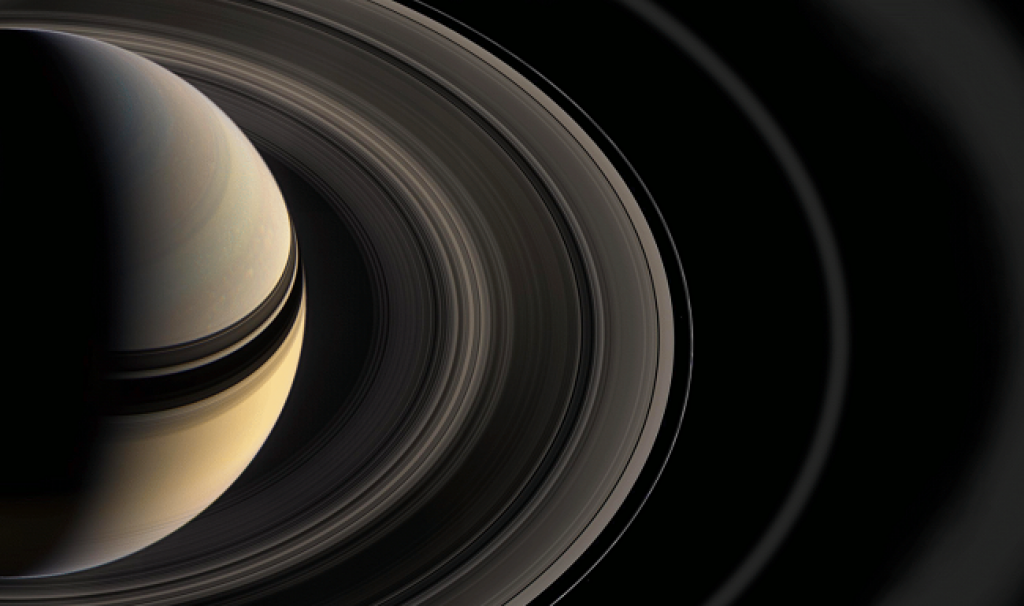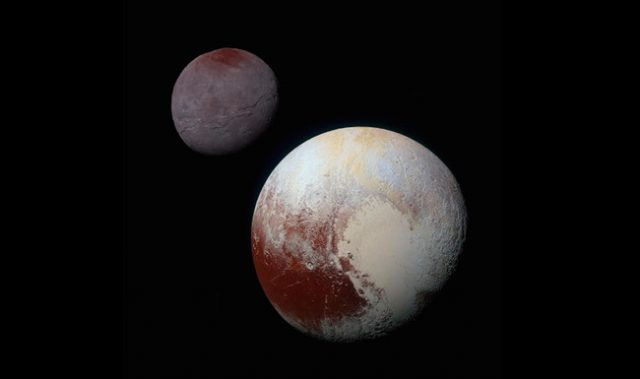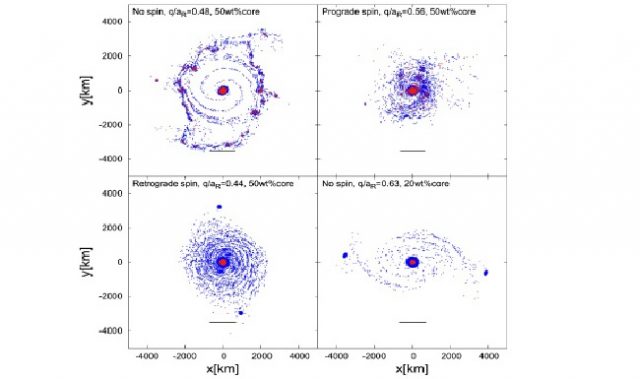
AsianScientist (Nov. 30, 2016) – Researchers from Japan and France have presented a new model for the origin of Saturn’s rings based on computer simulations. The findings were published in Icarus.
The giant planets in our solar system have very diverse rings. Observations show that more than 95 percent of Saturn’s rings are made of icy particles, while the rings of Uranus and Neptune are darker and may have higher rock content. However, the origin of Saturn’s rings is still unclear, and the mechanisms that lead to the diverse ring systems are unknown.
The present study, led by Dr. Ryuki Hyodo from the Kobe University Graduate School of Science, focused on the period called the Late Heavy Bombardment that occurred four billion years ago when the giant planets underwent orbital migration. It is thought that several thousand Pluto-sized (one-fifth of Earth’s size) objects from the Kuiper belt existed in the outer solar system beyond Neptune.
First, the researchers calculated the probability that these large objects passed close enough to the giant planets to be destroyed by their tidal forces during this period. Results showed that Saturn, Uranus and Neptune experienced close encounters with these large celestial objects multiple times.
Next, the group used computer simulations to investigate disruption of these Kuiper belt objects by tidal force when they passed the vicinity of the giant planets. They discovered that in many cases, fragments comprising 0.1-10 percent of the initial mass of the passing objects were captured into orbits around the planet. Thus, planetary rings were formed when sufficiently large objects came very close to the giants and were destroyed.
This model can also explain the compositional difference between the rings of Saturn and Uranus. Compared to Saturn, Uranus (and also Neptune) has a higher density. As a result, if Kuiper belt objects have layered structures such as a rocky core with an icy mantle and pass within close vicinity of Uranus or Neptune, both the rock and ice layers will be destroyed, forming rings that include rocky composition. However, if they pass by Saturn, only the icy mantle will be destroyed, forming icy rings.
These findings illustrate that the rings of giant planets are natural byproducts of the formation process of the planets in our solar system.
The article can be found at: Hyodo et al. (2016) Ring Formation Around Giant Planets by Tidal Disruption of a Single Passing Large Kuiper Belt Object.
———
Source: Tokyo Institute of Technology; Photo: NASA/JPL.
Disclaimer: This article does not necessarily reflect the views of AsianScientist or its staff.












